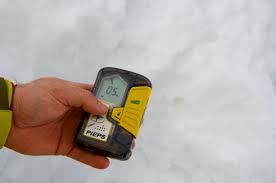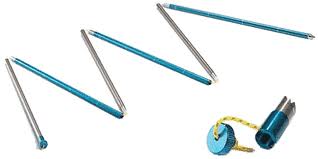
This is a guest blog provided by one of our observers who, to protect his identity, we'll refer to as "Todd Leeds". Wise words.


Most of us Wasatch skiers tend to put our ski gear away in the spring with the anticipation that it should be ready to grab as we run out the door during that first fall storm when there is just enough snow to walk up some of our closed resorts.We typically throw on our beacons with last year's batteries and are ready to go.This is also a great time to get rid of that moldy half eaten sandwich that has been sitting in the pack all summer.This rush to get our first turns begs the question we should all be asking: Is my beacon working and are my beacon skills up to date?
I typically address this situation by performing some simple preseason dryland beacon training.The local ball park is a great venue with lots of open space.I also make it point to read an up-to-date avalanche book or two a time or two during the summer. (Staying Alive in Avalanche Terrain by Bruce Tremper is the best we have found, only partly because he's the boss - UAC)
The first thing I do is put a fresh set of batteries in all of my beacons, even the older ones that are typically just used for practice.
My dryland on-the-ground testing typically includes the following steps:
Range Testing -This is great way of confirming that the range of your beacon still meets manufacture specifications.It also allows you to visualize the actual range of your beacon and specific distances.This will enable you to have a grasp on actual distances if you have to perform a search in the field for real.For example, can you quickly estimate 40,30 or 20 meters on the fly?
Coarse Searching - My next step is to perform coarse searching.I like to follow the flux lines in from the maximum distance.Once again, this allows me to gain an actual visual understanding of the flux line configuration and how our beacons follow them.It is important to do this multiple times with different orientations to the antenna of the transmitting beacon ( e.g. perpendicular and parallel).I even like to do this with the beacon standing on end (e.g. antenna axis pointed to the sky)
Fine searching - In my opinion fine searching is typically the crux of any beacon search.Performing fine searches in a dryland situation allows an excellent visualization of the process.It also provides a great opportunity for trial and error.I typically practice this with my beacon near the ground and at chest level.The chest level drill helps me to simulate and visualize a deeper burial situation.
Multiple Beacon Drills - After my fine searching drill is complete, I start practicing with multiple beacons spaced at various distance.I start with a coarse type search and then proceed to fine searching as described above.I pay close attention to how my bacon reacts to multiple signals.This includes the marking and suppressing features.Once again, this allows me to visualize and understand the search in a trial and error manner with direct feedback
Cell Phone Interference - Dryland beacon drills are also an excellent venue to evaluate the potential interference issues with cell phones and other electronic devices.You can try different drills with the phone on/off and in varying proximity to the search and transmit devices.Please note, this is a qualitative assessment only and I am not recommending carrying any device that might interfere with beacons.
For those of use with flotation backpacks, it's also a great time to pull the trigger on a test inflate.This allows us to have some confidence in our system and also start the season with a fresh recharge of air.
The drills described above coupled with actual on snow practice are good reasons to keep your old beacons as you upgrade.
Please note that this blog was written as an outline and is not intended to replace actual training such as the great classes taught by the UAC.
This is alsogood time to practice deploying your probe and shovel with gloves/mittens, helmet, goggles, etc. on to make sure you remember how and that all the mechanisms still work - UAC
At the end of the drill, I always place the spare "car beacon"along with a probe and shovel back in the car.Over the last 30-plus years these spares have come in handy when my partners or I have forgotten gear.It's a lot easier than driving home and safer than going without.






